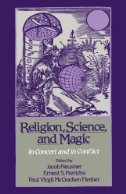
-
R 3,300.00
- EMAIL US
- OUT OF STOCK
- Download Catalogue

Every culture makes the distinction between "true religion" and magic, regarding one action and its result as "miraculous," while rejecting another as the work of the devil. Surveying such topics as Babylonian witchcraft, Jesus the magician, magic in Hasidism and Kabbalah, and magic in Anglo-Saxon England, these ten essays provide a rigorous examination of the history of this distinction in Christianity and Judaism. Written by such distinguished scholars as Jacob Neusner, Hans Penner, Howard Kee, Tzvi Abusch, Susan R. Garrett, and Moshe Idel, the essays explore a broad range of topics, including how certain social groups sort out approved practices and beliefs from those that are disapproved—providing fresh insight into how groups define themselves; "magic" as an insider's term for the outsider's religion; and the tendency of religious traditions to exclude the magical. In addition the collection provides illuminating social, cultural, and anthropological explanations for the prominence of the magical in certain periods and literatures.

The specification in this catalogue, including without limitation price, format, extent, number of illustrations, and month of publication, was as accurate as possible at the time the catalogue was compiled. Due to contractual restrictions, we reserve the right not to supply certain territories.